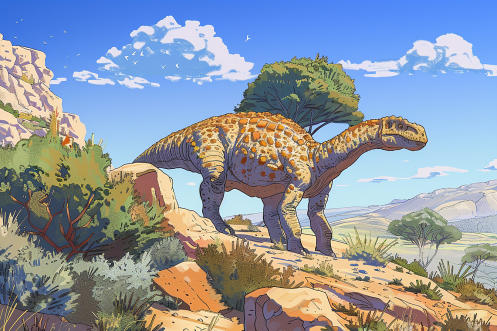
Montagne Sainte-Victoire, the iconic mountain near Aix-en-Provence, is not only a haven for hikers and nature lovers. Beneath its rocky layers lies a fascinating secret from a distant era: dinosaur eggs, offering a rare glimpse into the prehistoric wildlife that once roamed the region. The site is internationally renowned for the richness of its discoveries, attracting the interest of paleontologists and natural history enthusiasts alike.
“Eggs en Provence” is a play on words, referring both to dinosaur eggs and the city of Aix-en-Provence.
The dinosaur eggs found in the Sainte-Victoire region are primarily dated to the Late Cretaceous, around 70 to 65 million years ago. This period was marked by a significant diversification of dinosaurs, with the emergence of new herbivorous and carnivorous species. The eggs discovered in Montagne Sainte-Victoire are often preserved in marine limestones, formed by sedimentary deposits that hardened over time.
The terrain where these eggs are found belongs to the Cretaceous geological period, more specifically to the Maastrichtian stage. Marine rocks dominate the composition of the soil. The eggs themselves, which are sometimes fossilized, are rarely found intact. However, fragments of shells and imprints of young dinosaurs have been discovered, providing valuable insight into the living conditions of the creatures from that time.

The fossilization of dinosaur eggs is a complex process that requires very specific conditions. When an egg is laid by a dinosaur, it must quickly be covered by sediments to prevent it from being eaten or decaying. Once covered, the egg undergoes chemical changes that, over millions of years, transform it into a fossil. In the case of the eggs found on Montagne Sainte-Victoire, this process was enhanced by the compaction of marine sediments and the mineral richness of the region.
The eggshells, about 2 to 3 mm thick, were initially fragile and organic. Today, the resulting fossils are hard and dense, offering a unique window into their original structure. This type of fossil allows paleontologists to study dinosaur reproductive behaviors, including nesting methods and interactions between individuals.
The eggs discovered in the region are often attributed to herbivorous dinosaurs such as the Hadrosaurids (duck-billed dinosaurs), which were among the most abundant at the end of the Cretaceous period. Traces of these creatures have been found in the same geological layers, suggesting that Montagne Sainte-Victoire was a favorable environment for their reproduction. It is also possible that fossils of eggs from other groups of dinosaurs, such as sauropods, may have been found in the region, although exact data remains scarce.
What sets Sainte-Victoire apart from other paleontological sites in France is its geographic location at the heart of the Mediterranean basin. During that time, the region was bordered by shallow seas, creating an environment conducive to the accumulation of sediments and the fossilization of dinosaur eggs.

The Sainte-Victoire Mountain Nature Park, where these fossils were discovered, is a protected site. Access to specific areas where these eggs were found is regulated to preserve the integrity of the fossils and limit the impact of human activities on these valuable remains. While these fossils are not always accessible to the general public, researchers and paleontology enthusiasts can conduct excavations and studies to deepen our understanding of prehistoric life in Provence.
Visitors to the park can, however, enjoy a number of spectacular viewpoints and trails that pass through ancient geological formations, offering an overview of the natural landscapes and the region's geological history. Some guided tours also provide the opportunity to explore the fossil treasures of the mountain and learn more about the local paleontology.
